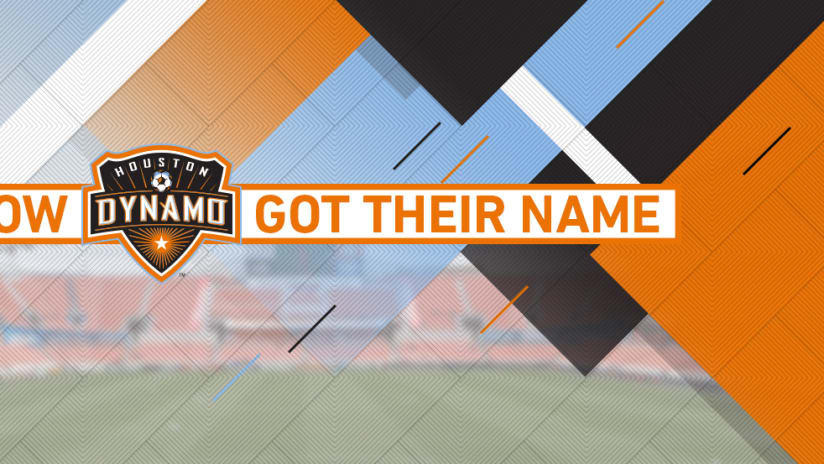So far we’ve looked at the history behind the names of a few MLS teams – D.C. United, Real Salt Lake, and the current San Jose Earthquakes, who were formerly known as the San Jose Clash.
Next up is the team that used to be the Earthquakes – the Houston Dynamo.
With efforts on a long-term soccer stadium plan in San Jose failing to materialize, the then owners of the San Jose Earthquakes, Anschutz Entertainment Group (AEG), made the decision to move the organization to Houston. There would be, however, one important condition: The name, colors, logo, and history of the Earthquakes would remain in the Bay Area, and would later be assigned to the next iteration of the team that emerged when the principal owners of baseball's Oakland A’s stepped up to revive the club ahead of the 2008 MLS season.
But the coaches and players formerly known as the Earthquakes moved to Houston to start the 2006 season there – and they would need a new name. It would just take a few tries, as it turned out, to settle on the final one.
In January 2006, the team announced the first one: Houston 1836. It represented, they said, an attempt to honor the year Houston was founded, in the style of German teams like Hannover 96 and TSG 1899 Hoffenheim.
At the time, team president Oliver Luck told the New York Times that number-as-name won out over a range of other candidates. Those other early options? They included the “Americans, Apollos, Buffaloes, Bulls, Eagles, Generals, Lonestars, Mustangs, Stallions and two names in Spanish, Gatos (Cats) and Toros (Bulls).”
As those up on their Texas history know, 1836 was also the year of the Battle of the Alamo, the Battle of San Jacinto, and Texas’ independence from Mexico. Houston’s sizeable Latino community was not exactly pleased.
Luck took the backlash seriously from the outset, recalls Chris Canetti, the current Houston president, who came to the organization as its chief operating officer in May 2006. He notes that while they were "a little bit embarrassed about having to change the name,” they understood the necessity, and wanted to be sensitive to the club's new fans.
He recalls that while the first 1836 choice created some initial notoriety, the organization was “seen in a positive light by reacting and responding by changing the name.”
And as early as February 15, just three weeks after the initial announcement, the Houston Chronicle was reporting about an impending name change. The team would not make an official announcement until a March 7 ceremony at the Houston Museum of Natural Science, less than one month before their first official match – and the big reveal? The Houston Dynamo.
No, it didn’t appear in that initial list of options, but Luck and the rest of the AEG team in Houston chose it for its nod to Houston soccer history. The original Houston Dynamos were part of the short-lived United Soccer League in 1984 and 1985.
But as Canetti notes, they also touted the name for its evocation of Houston’s energy sector. “Houston’s the energy capital of the world,” he explains. “Dynamo’s a word that represents energy, movement, pace, and quickness.”
At the name unveiling, Luck elaborated: “Dynamo is a word to describe someone who never fatigues, never gives up,” he told the crowd. “The new name is symbolic of Houston as an energetic, hard-working, risk-taking kind of town.”
And, as a bonus, Dynamo added to the trend that 2005 expansion teams Real Salt Lake and Chivas USA had started, of new MLS clubs drawing on traditional soccer names. Dynamo, of course, is a favored team name in Eastern Europe, where teams like Dynamo Kyiv, Dynamo Moscow, and Dinamo Zagreb have been standard-bearers.
The name decided, they also settled on an early, and consistent part of the team’s aesthetic: the color orange. “There was a lot of red and a lot of blue in the league when we came into it,” Canetti says. “We wanted something to distinguish ourselves, and wanted to be in a situation where if you saw an orange jersey in the United States, you knew with certainty that it was a Dynamo jersey.”
Eventually, the color found its way into the team’s long-time slogan, “Forever Orange.” And these days, that’s become almost as distinctive to the team’s brand as its second, enduring name.













